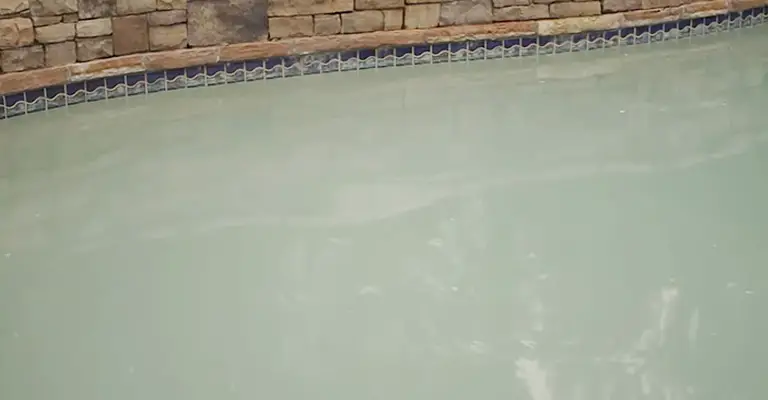Imagine stepping outside on a beautiful sunny day, ready to enjoy a refreshing dip in your pool.
But as you approach the water’s edge, you’re greeted with a disappointing sight—a cloudy, murky pool that hardly resembles the sparkling oasis you once knew.
Cloudy pool water not only hampers your swimming experience but also serves as a red flag for potential water quality problems.
However, don’t lose hope just yet! With the proper knowledge and a little bit of effort, you can restore your pool to its crystal-clear glory.
Clarify should be used to treat cloudy water caused by poor filtration. Water that is mildly cloudy can be cleared with a clarifier. As your filter runs, add it every other day until your water is clear.
A pool with insufficient filtration may have cloudy water. Make sure the filter is regularly checked for buildup and blockages.
How Long Does It Take For A Cloudy Pool To Clear?
Depending on how cloudy your water is, it may take 2-3 days for it to clear. To keep your water chemistry balanced, you must run your filter constantly if you use a clarifier.
Until it is clear, add water every other day as needed to clarify. Using flocculants for your pool can clear up cloudy water in 1-2 days. You will need to use a manual vacuum to remove the coagulated particles.
What Causes Cloudy Pool Water & How To Fix It?
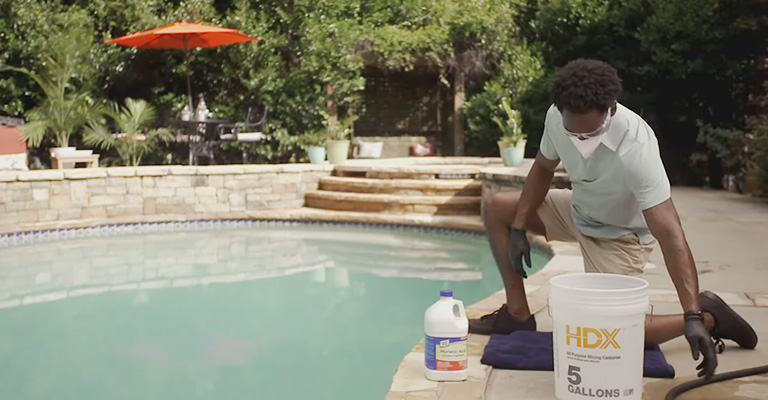
The reason pool water can become cloudy may be a mystery to you.
Four common problems can contribute to dirty pool water: poor filtration, low chlorine levels, poor water chemistry, or contaminants in the water.
Chemical imbalances and pH imbalances could be the cause of pool problems. Keeping a pool clean requires high chlorine levels and a pH that is suitable for the water.
Unless the pump or filter of a pool is working properly, the water may appear murkier than usual. Your pool may be affected by a storm or increased rainfall.
A pool can also grow bacteria more quickly when it receives too much sunlight, which heats the pool.
As a result of the sun’s ultraviolet rays, swimmers’ pools may have a lower level of chlorine. There is always a possibility that a cloudy pool will occur, even when you have a lot of people over to swim.
Check the Filter
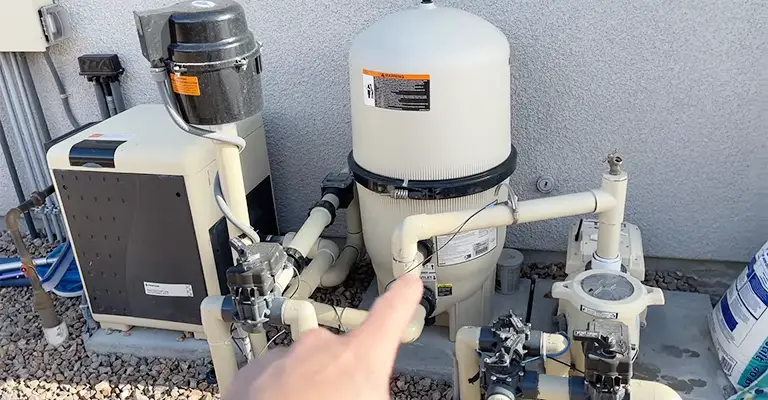
You should inspect the pool filter whenever the water in a pool is cloudy. Its purpose is to remove excess contaminants from water.
If your filters are dirty, they can leave trace amounts of particles in your water, which will cause your pool to become foggy.
- Make sure your filter area is swept with a pool brush.
- After that, inspect the filter to ensure it is clean and working correctly.
- Ensure your filter is clean at least twice a year to ensure it is performing correctly.
- The valves on defective or failing filters may be damaged. You may need to replace the filter cartridge.
- Ensure the filter is installed correctly if this is your first time using the pool. If your water is cloudy due to poor filtration, follow these steps:
- You should inspect your filter for worn or broken parts. It may be necessary to replace parts.
- It is recommended that the pump be run at least eight hours a day. Water returns from angle pools away from the surface.
- It is necessary to backwash the filter until a clear stream of water flows through it.
- Cleaning your filter media chemically is the best way to maintain the efficiency of your system.
- Ensure the skimmer basket is cleared of any debris that could clog the water flow.
Tip: For optimal performance, replace the cartridge in your pool filter at least once per season.
Balance the Chlorine
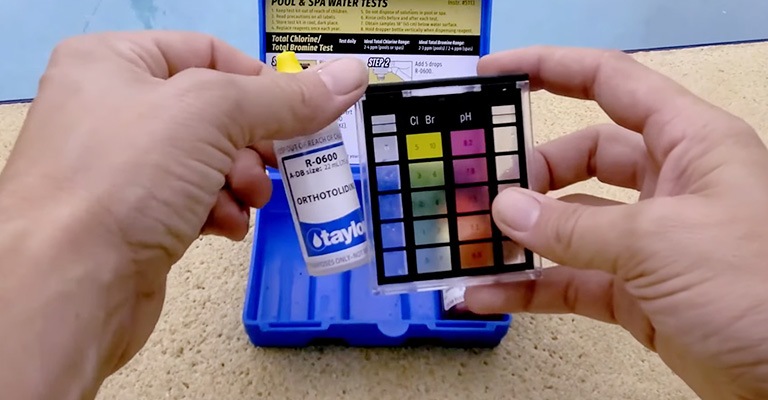
Next, measure the water’s chemical levels to see if your filter is clean and functioning properly. In addition to evaluating the total chlorine level in the pool, the testers can also evaluate the alkalinity level and the hardness of the water.
Cloudy pool water can be cleared using the results of the test. The chlorine level is recommended to remain between 1 and 3 parts per million (ppm).
Cloudy water may result when chlorine levels in your pool are depleted by sunlight, rain, and regular usage. The amount of chlorine is too low if the test strip or kit shows less than 1.0 ppm.
Check The Pool’s pH
As well as measuring the potential hydrogen (pH) of your pool’s water, pool test kits also gauge how acidic or alkaline it is. A pH of 7.0 indicates neutrality in pure water. It is ideal for a pool’s pH to range from 7.2 to 7.8, with 7.6 ideal.
Deficiencies below 7.0 indicate acidic water. In general, water levels above 7.8 are too alkaline or basic. Cloudy pools can occur in either of these cases. pH adjusters can be used to increase or decrease the pH of pools.
Contaminants, Like Debris or Algae
You might experience cloudy water in your pool due to pollution, particles, or small debris. Especially during springtime, this happens a lot. In addition to algae growth at an early stage, cloudy pool water can also be caused by bacterial growth.
Solution: Clean and shock your pool while algae are still in the early stages of growth. Your pool water needs to be balanced and cleaned after a rainstorm or when debris or pollen accumulates.
- Test, Balance, And Clean Your Pool After A Rainstorm
Storms can blow dirt and debris into your pool, and rain can also dilute the water. This can lead to a drop in chlorine levels, resulting in cloudy water, as we know.
If necessary, test and balance the water after a rainstorm, and brush, vacuum, and skim the pool.
- Treat Algae
Your pool water may be cloudy if there is visible algae growth. This problem must be addressed before you start treating your pool.
It is unfortunately not possible to solve the problem with algaecide. The best option is to use it as a preventative measure rather than to treat an illness.
It is recommended that you skim, brush, and vacuum your pool to remove algae. Ensure that the waste setting is selected when vacuuming to bypass the filter. The next step is to shock your pool.
Raise a Pool’s Alkalinity with Baking Soda
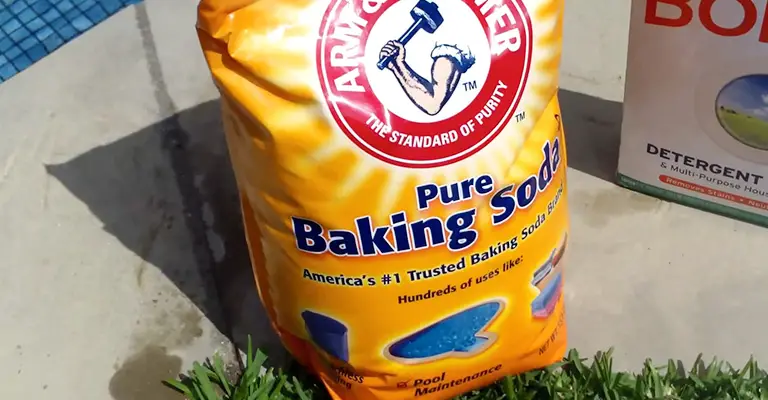
Chlorine can lower the pH of a pool if it is added. pH levels in your pool may be lower than ideal, between 7.2 and 7.8. Consequently, your pool’s alkalinity will also be low.
You can increase the pH by adding sodium bicarbonate, also known as baking soda, or amending the pool water with an alkalinity-raising product. Baking soda has an alkaline pH of 8, which means that it has an alkaline pH.
Here are some tips on how to clear a cloudy pool with baking soda:
- Ensure your pool has the proper alkalinity. This value should be between 110 and 115 parts per million (ppm). Test reports that it is less than 80 ppm indicate that the level needs to be raised.
- If you want to make this, you are going to need pounds of baking soda, which is more than the small box you might have in your kitchen cabinet. You will need to add baking soda in a certain amount depending on the size of your pool and alkalinity level.
- Add baking soda to the mixture according to the formula. The alkalinity of 10,000 gallons of water will be raised by 10 ppm by 1.5 pounds of baking soda.
- 3 to 4 pounds of baking soda are usually sufficient to raise the pH of a 10,000-gallon pool with a pH of less than 7.2.
- Try using roughly half of the amount of baking soda you think you should use. Check the water again afterwards to see if more baking soda is needed. It may end up being necessary to make your pool water more acidic if you add too much.
- In this case, you can shake the baking soda directly into the water. The baking soda needs to be scattered evenly across the pool. Make sure not to place it all in one place at once. An ideal time to add baking soda to a pool is when it is calm outside. When it’s windy, baking soda will blow away before it hits the water.
- For at least an hour, you can use the circulation system to help the powder move through the water.
- The baking soda needs to sit for six hours after it has been added. Your pool water may appear even more cloudy for a while. You will need to give baking soda some time to dissolve.
- When you put the baking soda in your pool, you should test your water again between six and 24 hours later. You can use an in-home test kit if you don’t have a test kit or strips.
- In case of a pool pH under 7.2 and alkalinity below 110 ppm, further baking soda may be required.
- A swimming pool tablet can also be added to your pool to maintain pH levels and alkalinity levels.
Clarify The Water
Learning how to clear cloudy pool water will not necessarily solve the issue by cleaning the filter and adjusting the chemical levels. It is possible that you need to clarify the pool.
Clarifying tablets and solvents will remove microparticles and excess debris from your water. An algaecide removes trace amounts of algae from the water safely and effectively.
If you want to clarify a pool, choose one that requires little mixing or measuring. There are several that are designed to work within 24 hours, and they can work with universal filters. If possible, avoid fragrances and dyes in your products.
Preventing Cloudy Pool Water
Here are some tips to prevent cloudy pool water:
- Make sure the pump runs 8 hours a day at least.
- To keep your pH in this range, maintain a pH between 7.2 and 7.6.
- To maintain optimal chlorine levels, keep them between 1 and 3 parts per million.
- Use pool shock every week. When your pool has been subjected to a lot of rain, high temperatures, or heavy use, you may need to shock it more often.
- If the pool is open and mid-season, chemically clean the filter or backwash.
- Make sure the jets are positioned downward to allow water to circulate freely.
Will A Cloudy Pool Clear On Its Own?
A cloudy pool can clear on its own as long as your filter is operating properly and consistently, your chlorine levels are correct, your water is balanced, and you have eliminated algae growth. The use of a pool flocculant or clarifier would be a better alternative.
Will Rainwater Make My Pool Cloudy?
Pool water often becomes cloudy because of rainstorms. It can wash contaminants into your pool water and reduce chlorine levels if more rainwater flows into your pool.
Does Too Much Chlorine Make Pool Water Cloudy?
Adding high amounts of chlorine to the pool, such as pool shock, can cause temporary cloudiness. Water that is cloudy often has high pH, alkalinity, and calcium hardness levels.
Why Is My Pool Cloudy After Shocking?
If your pool is otherwise clean and balanced, adding pool shock can even cause temporary cloudiness. Normally, this happens as your filter runs and dissipates over time.
Using a cheaper shock can also result in this issue. It is important to use cal-hypo shock and fully understand how the doses should be administered.
Should You Swim In Cloudy Pool Water?
A cloudy pool is not the best place to swim. Viruses and contaminants can be found in dirty pool water. Having trouble seeing the bottom of the pool also increases the risk of drowning.
Final Words
Several factors, such as a dirty filter or an imbalanced chemical solution, can contribute to cloudy pool water. How to clear a cloudy pool can be determined by testing the water.
Keep supplies such as pool chemicals and test kits handy during the swimming season.
It’s easy to save money and frustration by committing just a little time to regular testing and maintenance, so spend your time relaxing around the pool, cooling off in the water, and living your best life.

